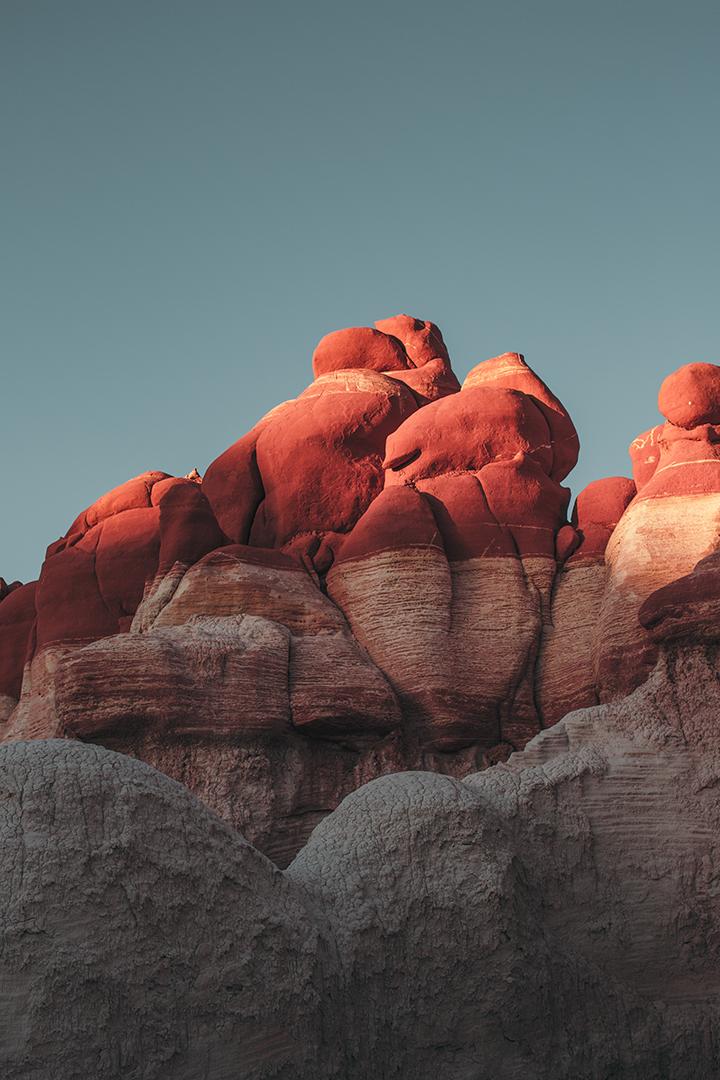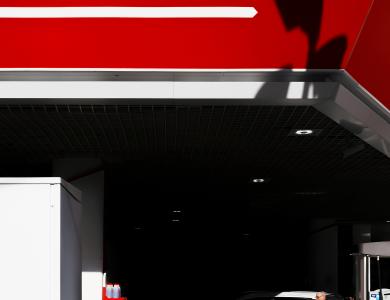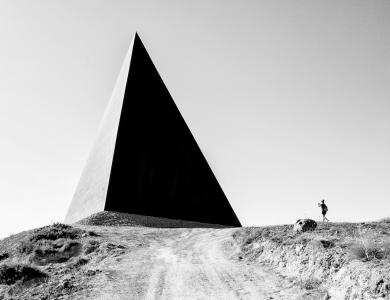
Chiara Zonca's photographs have an inexorable pull, inviting us to keep looking and marveling at her serene, quietly poetic images. She steps into the spotlight for this week's Instagram takeover. Enjoy her takeover here.
Was there one particular photographer or body of work that's made a big impression on your photographic practice?
There are so many. Some impacted me when I was a photography student, like William Eggleston with his cinematic colours, or the mysterious self-portraits of Francesca Woodman. In more recent years, one of the artists that has influenced me the most is Richard Misrach. I always found his work poetic and I am always trying to get lost inside one of his photos, catching myself wanting to be there, alone. These days I mainly look at old movies and cinematography for inspiration. I am a big fan of Antonioni, Bertolucci, Wenders, Lynch and Tarkovsky, to name a few.
To what extent is your work autobiographical?
It’s 100% autobiographical. Most of my personal work is about my experience with a number of things including depression and anxiety. Nature plays a huge part in my mental well-being and I am always trying to create work that speaks about my love for nature as well as my daily struggles in fitting in today’s society. I believe us humans have been gradually disconnected from nature through the evolution of our society, it’s a toxic circle as we are increasingly unhappy and trapped in a system that doesn’t necessarily serve us. I’d like to do my part in creating work that ties us back to nature, acknowledging we need wild spaces to thrive. If my love for a place is reflected in my photographs and absorbed by the viewer, then I’ve made my small part in attempting to repair this severed connection.
Humans' faces are absent from almost all your photographs, and when they do make an appearance it’s fleeting. What’s the meaning behind this?
Interestingly I don’t think about it really, it’s a subconscious thing. Most of the time I take photographs of myself and I guess there is still some shyness in getting photographed which I am still fighting against.
I’ve struggled with taking photographs of people for a very long time. The first few bodies of work I produced had in fact no human presence at all. I used to think that a person in a photo was distracting, risking to dilute the feeling of getting lost in a landscape. The moment you see a person you start wondering, who are they? What’s their story? You’re no longer thinking of the landscape and your impression of it, you’re not projecting yourself in the photo anymore.
Now I feel that adding the human element can actually bring more emotions into the landscape if done right. But I guess in a way I find faces still too distracting to the overall story.
Shadow on the Run is the name of your Instagram handle, what is the significance of this name?
Shadow on the run came from a Black Rebel Motorcycle Club song I used to listen to all the time when traveling. My full name on social media was already taken and this kind of stuck with me as it reflects my personality I guess.
You seem to have another account featuring your analog work, why? Have you always separated your digital and analog photography?
They aren’t separated at all actually, as confusing as it may sound. My main account features a mixture of analog and digital work, the emphasis being showing the more “official” work belonging to one of my series. I created @shadowonfilm to share candid snaps from my travels, it’s an experimental outlet for photos that would sometimes look out of place on my main feed. While @shadowontherun can show a mix of digital and film, @shadowonfilm is 100% analog work.
You have a healthy Instagram following, 81K+ (and counting!). Has this platform taught you anything about your work?
Yes, that Instagram is terribly dangerous. If you want to have a successful account you kind of have to keep posting the same type of images. If, on the other hand, you start feeling trapped and want to create work that is a little different like in my case, your audience is not going to be able to see it as the internal algorithms won’t promote it to your followers. Best way to deal with Instagram is to treat it as a website/portfolio page, don’t expect any feedback from your work, just share it without thinking too much about it, create work you are passionate about, not work you think will work for Instagram. Easier said than done, I know.
What do you think is the most exciting trend in the photography world right now? And how do you see the medium evolving?
I love how the BLM movement highlighted the need for the photography industry to be more inclusive. There are so many incredibly talented BIPOC artists that struggled for years to get some recognition in the industry. This movement put a bit more pressure on the editors, art directors and decision makers to actually check out a diverse array of work and to revise their hiring practises. This shift will undoubtedly benefit the industry as more voices are getting heard and more talent gets uncovered and I am definitely hoping this trend will last.
The continued rise in popularity of the photo-book is also very exciting. Every photographer I know is either already published or thinking of publishing one and the quality available out there is outstanding. They are satisfying for the photographer to make and are for sure extremely exciting for the collector as well as they get to dive into a world the artist has so carefully created for them. It’s magic.
Your photographs are often taken during your travels; how was lockdown for you? Has it impacted your photographic practice at all?
Lockdown has been an interesting experience. Obviously the inability to travel for work has badly impacted my finances and that took a toll on my mental health. I had extremely dark days where I seriously worried I was going to need help to cope, I mourned the loss of my previous life which I built with effort, love and dedication. To see all of it go up in flames was distressing. On the other hand, I happened to be living on an idyllic island not far from Vancouver when things went into lockdown so I just embraced living there fully and slowing down. I decided to create a series about my experience living in such a rural, beautiful and remote place. The atmosphere on the island was incredibly soothing and quiet, bearing a strong contrast from the storm of emotions I had been experiencing. I am still working on this series to this day and hoping to release it later this year.



